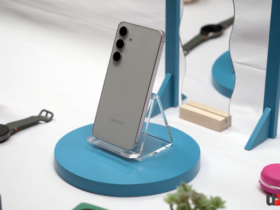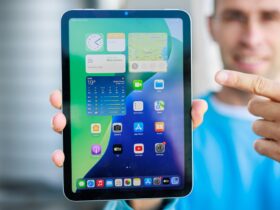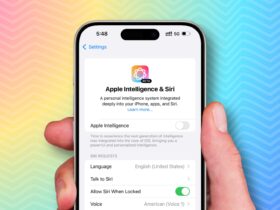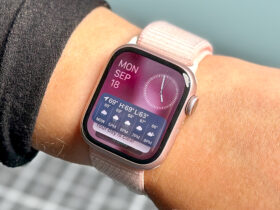Daftar Isi
Every iPhone Release in Chronological Order
The iPhone has revolutionized the mobile phone industry since its debut in 2007, forever changing how we communicate, access information, and interact with the world around us. Each iPhone release has brought significant advancements in technology, design, and functionality, solidifying its position as a leading innovator in the smartphone market.
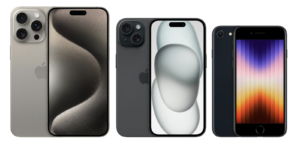
This article delves into the chronological order of iPhone releases, highlighting the key features and innovations that marked each generation:
Pioneering the Future: The Dawn of the iPhone (2007)
On June 29, 2007, Steve Jobs unveiled the first iPhone release, introducing a revolutionary device that combined a phone, iPod, and internet communicator in one sleek and intuitive package. This groundbreaking iPhone release featured a 3.5-inch touchscreen display, a 2-megapixel camera, and internet browsing capabilities, setting the stage for the future of mobile technology.
Breaking Barriers: Introducing the App Store (2008)
The iPhone 3G, released in July 2008, marked a pivotal moment with the introduction of the App Store. This revolutionary platform allowed users to download and install third-party applications, significantly expanding the functionality of the iPhone. The iPhone 3G also boasted faster internet speeds, GPS navigation, and a sturdier design.
Evolving Design and Performance (2009-2011)
The following years witnessed a series of iPhone releases that focused on refining the design and boosting performance. The iPhone 3GS (2009) introduced a faster processor, improved camera, and voice control capabilities. The iPhone 4 (2010) brought a sleek stainless steel design, a high-resolution Retina display, and front-facing camera for video calling. Finally, the iPhone 4S (2011) ushered in the powerful A5 chip, Siri voice assistant, and improved camera features.
Embracing a Larger Canvas: The Era of Bigger Screens (2012-2014)
The iPhone 5 (2012) marked a shift towards larger displays with its 4-inch Retina display, while maintaining the iconic thin and light design. The iPhone 5S (2013) introduced the Touch ID fingerprint sensor for secure unlocking and payments, along with a faster processor and improved camera. Finally, the iPhone 6 and iPhone 6 Plus (2014) redefined the iPhone experience with larger 4.7-inch and 5.5-inch displays, respectively, marking the beginning of the era of phablets.
Pushing Boundaries: Innovation Continues (2015-2017)
The iPhone 6S and iPhone 6S Plus (2015) introduced 3D Touch displays, offering a new dimension of user interaction. The iPhone SE (2016) offered a smaller and more affordable option with the design of the iPhone 5S and the power of the iPhone 6S. The iPhone 7 and iPhone 7 Plus (2016) introduced water resistance, dual cameras on the Plus model, and removed the headphone jack, sparking a new trend in the industry. Finally, the iPhone X (2017) marked a significant design change with its edge-to-edge display, Face ID facial recognition system, and dual rear cameras.
A New Era of Innovation: Face ID, Notch, and More (2017-2019)
The iPhone XS and iPhone XS Max (2017) offered improvements over the iPhone X with faster processors, better cameras, and a wider range of storage options. The more affordable iPhone XR (2018) joined the lineup, featuring a Liquid Retina HD display and a single rear camera.
The iPhone 11, iPhone 11 Pro, and iPhone 11 Pro Max (2019) introduced a significant redesign with a square rear camera bump and a powerful dual-lens system on the standard model and a triple-lens system on the Pro models. All three models boasted improved battery life and powerful A13 Bionic chips.
Embracing Diversity: A Range for Every Need (2020-Present)
The year 2020 welcomed the iPhone 12 mini, the smallest iPhone since the iPhone SE, alongside the iPhone 12, iPhone 12 Pro, and iPhone 12 Pro Max. All models introduced 5G connectivity for faster internet speeds and featured a sleek flat-edged design reminiscent of the iPhone 4. The Pro models boasted improved camera systems and LiDAR scanners for enhanced depth sensing.
In 2021, iPhone Release the iPhone 13 mini, iPhone 13, iPhone 13 Pro, and iPhone 13 Pro Max continued the design language of the previous generation. They offered improved camera systems, including larger sensors and sensor-shift stabilization on the Pro models, along with longer battery life.
The latest additions to the iPhone family are the iPhone 14, iPhone 14 Plus, iPhone 14 Pro, and iPhone 14 Pro Max (2022). These models introduce a dual-camera system on both the standard and Pro models, with significant improvements in low-light photography and videography.
The iPhone 14 Pro and iPhone 14 Pro Max further distinguish themselves with the introduction of a pill-shaped and hole-punch cutout replacing the notch, offering a more immersive display experience. Additionally, these models boast the powerful A16 Bionic chip and offer a new “Always-On Display” feature.

As technology continues to evolve, so too does the iPhone. Each iPhone release has pushed the boundaries of what’s possible in a mobile device, shaping the way we communicate, work, and play. With the continuous focus on innovation and user experience, the upcoming iPhone releases promise to continue this legacy of excellence.






